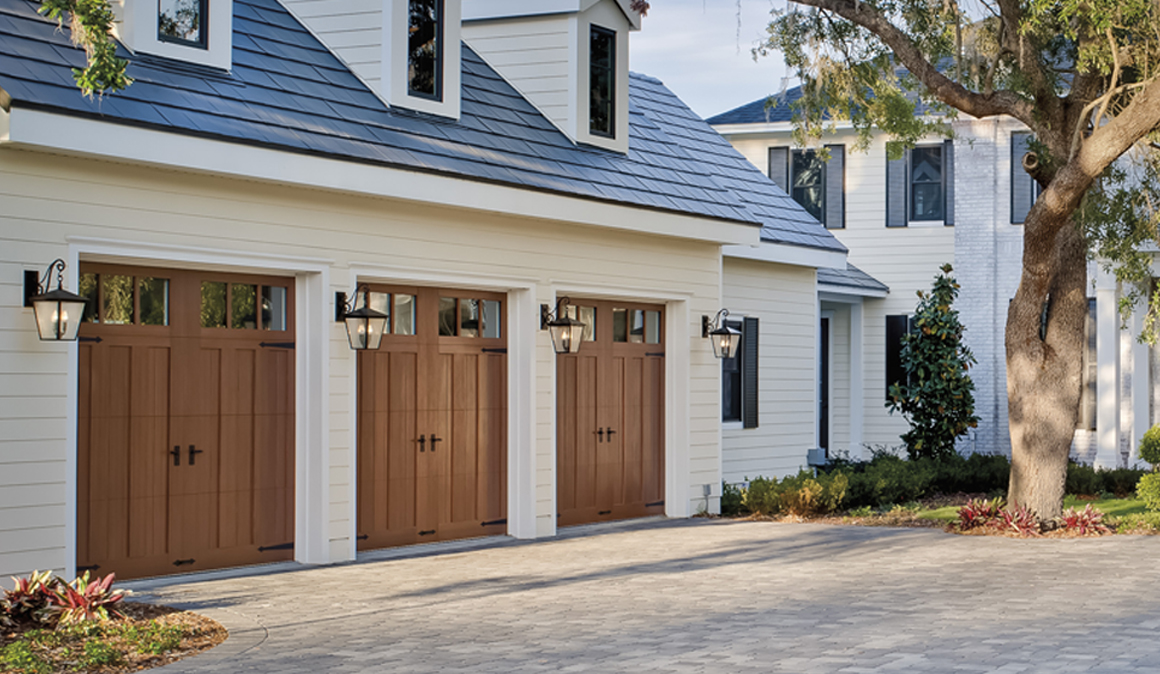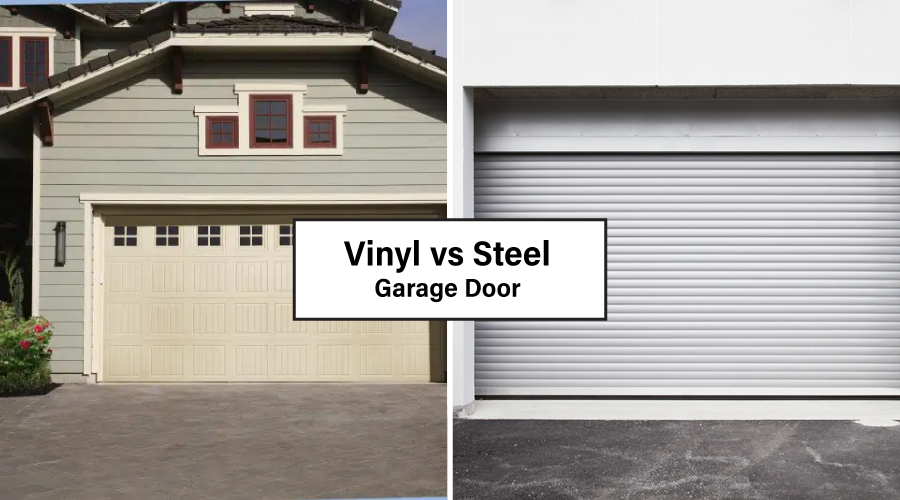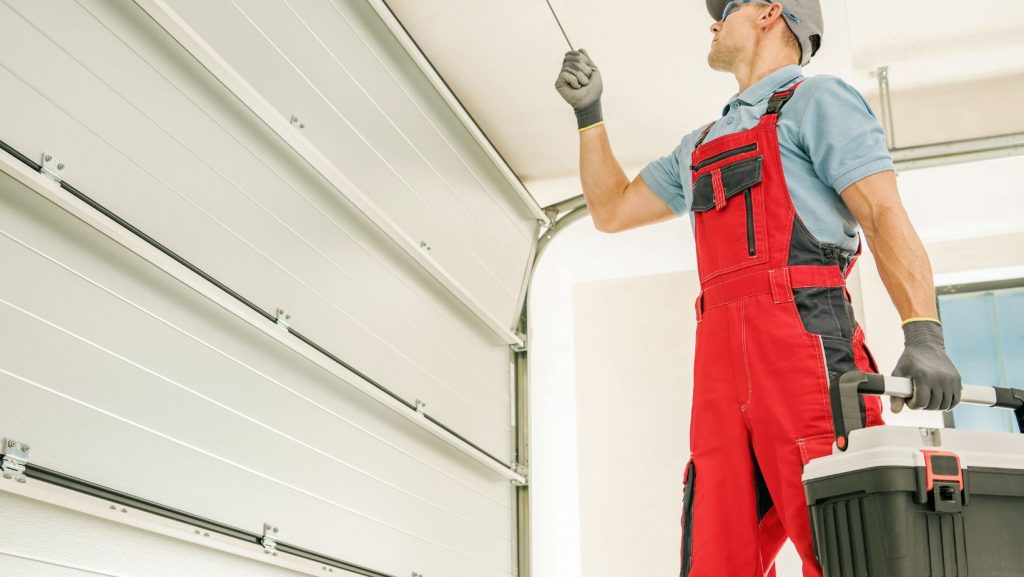Energy efficiency and home functionality have become bigger priorities for most homeowners, and insulated garage doors are quickly proving their worth. Beyond just temperature control, these doors can genuinely reduce your energy bills while offering better durability and improved curb appeal. The market has responded with plenty of customizable designs and advanced insulation technologies, but that also means more decisions to make. You'll want to balance material quality with your specific climate needs and budget constraints.
This guide covers the top-rated options, practical installation considerations, and realistic cost expectations to help you make a well-informed decision for your home.

Types of Custom Insulated Garage Doors
Modern insulated garage doors cater to different needs through specialized materials and construction. Here’s what you need to know:
1. Vinyl-Back Insulated Doors
These budget-friendly doors sandwich polystyrene foam between aluminum or steel panels, with a vinyl interior layer. They’re lightweight and easy to install, but their lower R-value (R-4–R-6) makes them better suited for mild climates like Southern California. One Nebraska homeowner noted they struggled with vinyl doors warping after two harsh winters, prompting an upgrade to steel.
2. Steel Back Insulated Doors
Adding a steel interior layer boosts durability, making these doors ideal for areas with extreme temperature swings. Their mid-range insulation (R-6–R-8) balances cost and performance. However, improper installation can cause air leaks. A Minnesota family discovered this the hard way when their unsealed edges let icy drafts into their garage gym.
3. Steelback Polyurethane Insulated Doors
With dense foam injected between steel layers, these premium doors excel in harsh climates. Their R-18–R-19 rating blocks Arctic blasts and desert heat alike. A Colorado Springs contractor swears by them for garage workshops:
“Our customers save $15–$25 monthly on heating bills with these doors”

4. Thermacore Doors
Overhead Door’s Thermacore line uses thermal breaks (rubberized strips that prevent heat transfer) to achieve R-17.5 efficiency. Their interlocking panels are a favorite in hurricane-prone Florida for resisting both storms and humidity.
Balancing Garage Door Prices and Energy Savings
Real Costs in 2025
Garage door prices vary widely based on materials and insulation:
- Steel: $750–$3,500 (most durable; ideal for hail-prone regions)
- Polyurethane insulation: Adds $300–$1,200 vs. polystyrene
- Labor: $150–$700 depending on door weight and automation
For example, upgrading from a single-layer steel door (R-0) to an R-18 polyurethane model costs $2,100–$3,800 installed but can reduce energy bills by 10–15% for climate-controlled garages.
Top-Rated Models for Every Budget
1. Clopay Intellicore (Premium Pick)
- Price: $2,400–$3,900 installed
- Key Features: R-20.4 rating, claims 40% noise reduction
- Warranty: Lifetime on sections, 10 years on springs
2. Amarr Classica (Mid-Range)
- Price: $1,800–$2,700 installed
- Key Features: Triple-layer steel with woodgrain finishes
- Best For: Historic homes needing modern efficiency
3. Hormann ThermoSteel (Eco Option)
- Price: $2,100–$3,300 installed
- Key Features: Recycled aluminum panels, R-16 rating
- Pro Tip: Their UV-resistant coating prevents sun damage in Arizona and Texas

Climate-Smart Selection Guide
Cold Climates
Prioritize R-18+ doors with magnetic seal kits. A Duluth, MN homeowner paired this with weatherstripping to keep their garage above freezing without a heater.
Hot/Humid Regions
Choose galvanized steel or fiberglass to resist corrosion. Floridians should look for ventilated panels that reduce humidity buildup.
Windy Areas
Opt for doors with horizontal brace rods and impact-rated windows. Texas installers recommend these for withstanding 70+ mph gusts.

Installation Insights
Professional vs. DIY
While pre-cut polystyrene kits ($75–$200) work for basic retrofits, steelback doors demand professional installation. Minnesota garage remodeler Lisa Tran explains:
“We’ve fixed too many DIY jobs lacking proper spring tension, it’s a safety risk with 300-lb doors”
Critical Components
- Torsion springs: Counterbalance door weight (replace every 7–12 years)
- Thermal seals: Prevent drafts around edges

Warranties That Protect Your Investment
Leading brands now offer enhanced coverage:
- Door sections: Lifetime against rust/denting (Clopay, Amarr)
- Hardware: 5–10 years for springs and openers
- Labor: 1–2 years from certified installers
Always verify warranty terms. An Ohio homeowner avoided $420 in repairs when Hormann covered a defective hinge under their 8-year plan.

Final Recommendation
Investing in insulated garage doors pays dividends in comfort and savings, but matching the door to your climate is crucial. Your best bet is to bring in a certified installer for an assessment. Most offer free quotes that include R-value calculations and style recommendations based on your home's actual needs. It's worth getting that professional perspective before you commit.
As for costs, 2025 pricing typically runs from about $1,500 for solid basic models up to $5,000 or more for premium builds. The good news is, there's usually an energy-efficient option that fits your budget and climate requirements.
